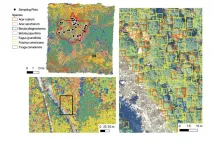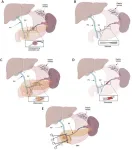(Press-News.org) July 16, 2024-- A new report from Columbia University Mailman School of Public Health and the Columbia Aging Center with colleagues from the Norwegian Institute of Public Health highlights a troubling trend: while global adolescent fertility rates have significantly declined, sub-Saharan Africa is experiencing an increase in teen births. This region's share of global adolescent births surged from 12 percent in 1950 to 47 percent in 2020 and is projected to reach a clear majority – a full 67 percent - by 2035. The findings are reported in the journal Studies in Family Planning.
“This divergence we are seeing is related to limited use of modern contraception, lower education levels, and early marriages which are still prevalent in this region,” said Vegard Skirbekk, PhD, professor of Population and Family Health at Columbia Public Health and the Aging Center and principal investigator. “Despite global advancements, the number of teen births remains high and in absolute numbers increasing in regions with rapidly growing populations, significantly impacting the overall global trend.”
Sub-Saharan Africa has emerged as the world region with the most teen births, increasing its proportion of global teen births over a 70-year span -- a time during which this region's share of the global adolescent population – those aged 15 to 19 grew from 7.5 percent to 19 percent.
The researchers analyzed data from the World Population Prospects 2022; World Contraceptive Use 2022; World Marriage Data 2019; and World Development Indicator.
In terms of absolute numbers, the number of births in Sub-Saharan Africa rose from 4.5 million births in 2000 to 6.1 million in 2021. At the same time, it decreased in the rest of the world, from 13.5 million to 6.7 million from 2000 to 2021.
The persistence of high teen fertility rates in sub-Saharan Africa poses substantial challenges at both individual and societal levels. International organizations, including the WHO and the UN, emphasize the need to reduce adolescent childbearing as part of broader efforts to provide universal access to sexual and reproductive healthcare and education.
Effective policies are crucial to address this issue, according to Skirbekk and co-authors, such as reducing adolescent childbearing, raising female education levels, increasing the legal and effective age at marriage, and providing free or subsidized modern contraceptives. “Without targeted interventions, the rising number of births to teenage mothers in sub-Saharan Africa could plausibly reverse global progress in reducing adolescent fertility.”
The number of births to teen mothers in sub-Saharan Africa is expected to continue to increase over the coming decades due to the region’s continuing increase of teenage cohorts outweighing the decline in the teenage fertility rate.
Co-authors are Thomas Spoorenberg, United Nations Department of Economic and Social Affairs and Norwegian Institute of Public Health; Ellen Øen Carlsen and Martin Flatø, Center for Fertility and Health, Oslo; Marcin Stonawski, Cracow University of Economics, Poland and Statistics Denmark; and Vegard Skirbekk, Centre for Fertility and Health, Columbia Mailman School and Norwegian Institute of Public Health, Oslo.
The study was supported by ERC Advanced Grant Project, 101142786 HOMME; Norwegian Research Council, DIMJOB 296297; Norwegian Research Council, CEFH 262700.
Columbia University Mailman School of Public Health
Founded in 1922, the Columbia University Mailman School of Public Health pursues an agenda of research, education, and service to address the critical and complex public health issues affecting New Yorkers, the nation and the world. The Columbia Mailman School is the fourth largest recipient of NIH grants among schools of public health. Its nearly 300 multi-disciplinary faculty members work in more than 100 countries around the world, addressing such issues as preventing infectious and chronic diseases, environmental health, maternal and child health, health policy, climate change and health, and public health preparedness. It is a leader in public health education with more than 1,300 graduate students from 55 nations pursuing a variety of master’s and doctoral degree programs. The Columbia Mailman School is also home to numerous world-renowned research centers, including ICAP and the Center for Infection and Immunity. For more information, please visit www.mailman.columbia.edu.
END
Decline in global adolescent fertility rates is counteracted by increasing teen births in Sub-Saharan Africa
2024-07-16
ELSE PRESS RELEASES FROM THIS DATE:
Apps and AI could help personalize depression diagnosis and treatment
2024-07-16
New research at the University of Illinois Chicago is testing whether digital tools can help predict which patients with depression will benefit from specific treatments and help deliver those treatments to them on demand.
Two new grants awarding over $10 million to UIC will help Dr. Jun Ma and colleagues in the College of Medicine investigate the use of a smartphone app, an AI voice assistant and other technologies to diagnose and treat depression.
The researchers hope these tools will both broaden access to psychiatric care and ...
Researchers create new template of the human brain
2024-07-16
The human brain is responsible for critical functions, including perception, memory, language, thinking, consciousness, and emotions.
To understand how the brain works, scientists often use neuroimaging to record participants’ brain activity when the brain is performing a task or at rest. Brain functions are systematically organized on the cerebral cortex, the outer layer of the human brain. Researchers often use what is called a "cortical surface model" to analyze neuroimaging data and study the functional organization of the ...
Study identifies protein that helps COVID-19 virus evade immune system
2024-07-16
An article published in the journal Cell describes a study that enabled a group of researchers to discover how SARS-CoV-2 evades the cytotoxic immune response by identifying a protein called ORF6 that is a key factor in this mechanism.
The cytotoxic immune response involves T-lymphocytes that kill pathogens when they recognize cells bearing a specific antigen while sparing neighboring uninfected cells.
The study was led by Wilfredo Garcia-Beltran and Julie Boucau, research scientists at the Ragon ...
Scientists use machine learning to predict diversity of tree species in forests
2024-07-16
A collaborative team of researchers led by Ben Weinstein of the University of Florida, Oregon, US, used machine learning to generate highly detailed maps of over 100 million individual trees from 24 sites across the U.S., publishing their findings July 16th in the open-access journal PLOS Biology. These maps provide information about individual tree species and conditions, which can greatly aid conservation efforts and other ecological projects.
Ecologists have long collected data on tree species to better understand a forest’s unique ecosystem. Historically, this has been done by surveying small plots of land and extrapolating those findings, though this cannot account for ...
Machine learning helps define new subtypes of Parkinson’s disease
2024-07-16
Researchers at Weill Cornell Medicine have used machine learning to define three subtypes of Parkinson’s disease based on the pace at which the disease progresses. In addition to having the potential to become an important diagnostic and prognostic tool, these subtypes are marked by distinct driver genes. If validated, these markers could also suggest ways the subtypes can be targeted with new and existing drugs.
The research was published on July 10 in npj Digital Medicine.
“Parkinson’s disease is highly heterogeneous, which means that ...
Weight loss influences risky decisions in obesity
2024-07-16
People who are severely overweight (obese) not only exhibit altered risk behavior, but also changes in their metabolism and psyche. It was previously assumed that severely obese people are more impulsive and show an increased willingness to take a risk. Scientists from the DZD partner German Institute of Human Nutrition Potsdam-Rehbrücke (DIfE) have now investigated whether massive weight loss leads to an improvement in metabolic and psychological states and whether decision-making is improved. The results were published in the journal 'Clinical Nutrition'.
Being overweight can cause metabolism to slip
Our behavior depends on many factors. ...
EurekAlert! Travel Awards recognize early-career science journalists in Eastern Europe for the first time
2024-07-16
The winners of the 2024 EurekAlert! Travel Awards are Pavla Hubálková, a Czech science journalist at WIRED.CZ, and Iris Duțescu, a Romanian freelance science journalist.
An independent panel of three judges with regional science journalism expertise selected the winners. Both awardees will receive travel support from EurekAlert! to attend the 2025 Annual Meeting of the American Association for the Advancement of Science (AAAS) in Boston, Mass., where they will have opportunities to cover the latest scientific research and make connections with scientists ...
Etiologies of splenic venous hypertension
2024-07-16
Splenic venous hypertension (SVH), also known as left-sided portal hypertension, is a rare condition characterized by upper gastrointestinal (GI) bleeding in the absence of liver disease. This condition arises due to increased pressure in the splenic vein (SV), causing blood to drain through the short gastric veins to the stomach, leading to the dilation of submucosal structures and the formation of gastric varices. Unlike traditional portal venous hypertension (PVH), SVH does not involve elevated pressures in the main portal vein and is primarily an extrahepatic condition. Diagnosing SVH requires ...
Breakthrough in quantum microscopy: Stuttgart researchers are making electrons visible in slow motion
2024-07-16
"With the method we developed, we can make things visible that no one has seen before," says Prof. Sebastian Loth, Managing Director of the Institute for Functional Matter and Quantum Technologies (FMQ) at the University of Stuttgart. "This makes it possible to settle questions about the movement of electrons in solids that have been unanswered since the 1980s." However, the findings of Loth's group are also of very practical significance for the development of new materials.
Tiny changes with macroscopic consequences
In ...
E-sales of a wild bat sold as décor threaten species
2024-07-16
A fiery orange bat, its wings folded and tiny teeth forever bared on its fuzzy face, is mounted inside a 6-inch, black coffin. Its retail price: $59. Or, for $140, you can get one framed with its black and orange wings spread, deliverable in two days.
Despite declining numbers in the wild, hundreds of specimens like this of Kerivoula picta—or painted woolly bat—are being sold on Etsy, eBay and Amazon as jewelry, Halloween decorations, and jarred curios.
A study published July 9 in the European Journal of Wildlife Research found “abundant evidence that ...





